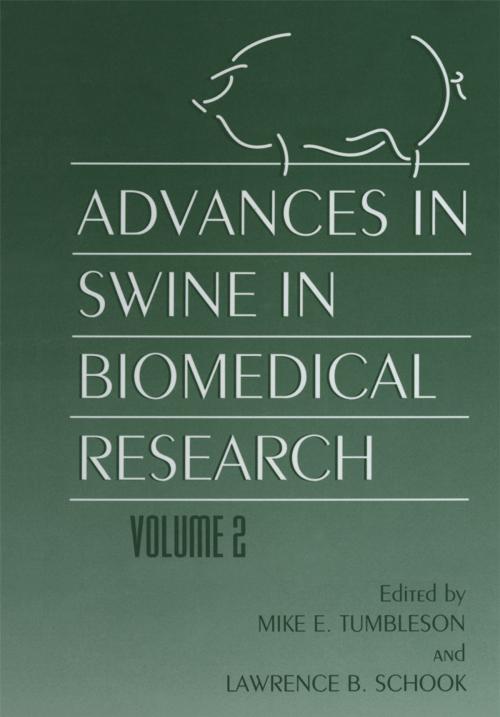Advances in Swine in Biomedical Research
Volume 2
Nonfiction, Science & Nature, Science, Biological Sciences, Biochemistry, Health & Well Being, Medical, Ailments & Diseases, Infectious Diseases, General| Author: | ISBN: | 9781461558859 | |
| Publisher: | Springer US | Publication: | March 7, 2013 |
| Imprint: | Springer | Language: | English |
| Author: | |
| ISBN: | 9781461558859 |
| Publisher: | Springer US |
| Publication: | March 7, 2013 |
| Imprint: | Springer |
| Language: | English |
Similarities in structure and function between pigs and human beings include size, feeding patterns, digestive physiology, dietary habits, kidney structure and function, pulmo nary vascular bed structure, coronary artery distribution, propensity to obesity, respiratory rates, tidal volumes and social behaviors. Since the pig is an omnivore, it provides an adaptable model to evaluate chronic and acute exposures to xenobiotics such as alcohoL caffeine, tobacco, food additives and environmental pollutants. Swine have been used successfully as models to evaluate alcoholism, diabetes, absorption, digestion, total paren teral nutrition, organ transplantation, atherosclerosis, exercise, hypertension. hemorrhagic hypotension, melanoma, gingivitis, obstructive and reflux nephropathy. osteochondrosis. dermal healing and septic shock. A severe and worsening shortage of organs and tissues for transplantation in patients with severe organ failure has encouraged the consideration of inter species or xenotransplan tation. In developing programs toward this end, the pig generally is viewed as the preferred donor because of its size, physiology and availability. The pig harbors relatively few diseases which could be transmitted inadvertently to human patients. The ability to genetically modify swine to ameliorate the consequences of the human immune response offers a further significant advantage. Another important consideration for an animal model is that basic biologic back ground information be available for investigators to design future prospective studies.
Similarities in structure and function between pigs and human beings include size, feeding patterns, digestive physiology, dietary habits, kidney structure and function, pulmo nary vascular bed structure, coronary artery distribution, propensity to obesity, respiratory rates, tidal volumes and social behaviors. Since the pig is an omnivore, it provides an adaptable model to evaluate chronic and acute exposures to xenobiotics such as alcohoL caffeine, tobacco, food additives and environmental pollutants. Swine have been used successfully as models to evaluate alcoholism, diabetes, absorption, digestion, total paren teral nutrition, organ transplantation, atherosclerosis, exercise, hypertension. hemorrhagic hypotension, melanoma, gingivitis, obstructive and reflux nephropathy. osteochondrosis. dermal healing and septic shock. A severe and worsening shortage of organs and tissues for transplantation in patients with severe organ failure has encouraged the consideration of inter species or xenotransplan tation. In developing programs toward this end, the pig generally is viewed as the preferred donor because of its size, physiology and availability. The pig harbors relatively few diseases which could be transmitted inadvertently to human patients. The ability to genetically modify swine to ameliorate the consequences of the human immune response offers a further significant advantage. Another important consideration for an animal model is that basic biologic back ground information be available for investigators to design future prospective studies.















